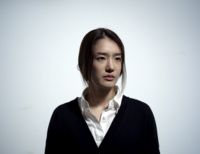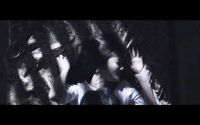[HanCinema's Film Review] "Characters": First Thoughts (Psychoanalytical Feminism)
Published on
"Characters" made its international debut in January of this year at the International Film Festival Rotterdam and recently competed at JIFF 2011 for best Korean feature film. It's a fascinating postmodern metafilm that raises a lot questions about the nature of film narratives and the characters that occupy filmic dreamscapes.
This is Son Kwang-Ju's first feature film and it was one of my personal favourites at JIFF 2011. I don't intend to go into to much detail here about the actual plot but instead I offer my initial understanding of the film as postmodern feminist text. What follows is a brief discussion of some of the film's overarching themes as well as comments on the film's critique of gender and narrative. The film's opening and closing scenes are my primary focus as they provide the necessary "pre-text" information required to fully appreciate the film's intention and themes.
Let me start this discussion by briefly describing the first scene. A man's voice-over is heard as we see a small rundown building seemingly isolated from society. The sound of a hammer clangs again and again, as if something was being forced into formed by a creator. A number of characters then step out of the house and line up for inspection.
Glasses or no glasses? Blond or brunette? Some decisions seem trivial while others cliché, the point is that what we are seeing on screen is a visual manifestation of the creative process. The male narrator, having created basic characters and an outline of a possible story, then hands the reins over to a female voice. The camera then pans across the ocean and the hypnotic sounds of waves crashing down lures us into the story that follows.
Setting the Creative Tone: Masculine vs. Feminine
Let me say that I plan to watch this film again as soon as I can. "Characters" is a very complex film that layers a number of thematic and structural elements together to create a thought provoking critique of the fundamentals of commercial film-making. It is a postmodern feminist text that exposes, critiques and examines patriarchal agency as it relates narrative and the film making process. It all sounds delicious and a second viewing is required!
The opening scene really sets up the film in terms of its thematic orientation. Issues of masculine vs. feminine become evident and when the film returns to this house at the end of the film we have a solid picture of what director Son Kwang-Ju's was aiming for.
A Hammer. A creative tool used to violently manipulate an object into a desired form. Our male narrator is in charge here as he leads the construction of the characters we see come out of the house. The house they come out of is the mind of the creator- small, dark, confining, and disconnected. It's a harsh depiction of male creativity, even more so when contrasted with the how the film portrays its counter.
The Ocean. A seemingly endless body of water characterised by fluidity, power, and harmony. This is the feminine influence in the creative process and when the female narrator "takes over", this is the last image we see before the film's second reality takes shape. There is a sharp contrast between masculine and feminine here. Both the hammer and the waves are able to shape an object into form, the differences is the process as well as the result. Gentle waves versus violent strikes, sharp edged versus smooth and progressive curves. These are the kinds differences in the creative process that are symbolically represented in this opening scene.
Psychoanalysis and Filmic Dreamscapes
Film, according to psychoanalytical film theory, can be likened to dreams. In which, we project unconscious desires and thoughts through the use of latent symbols that act as a form of cathartic release. Film can be seen as a kind of lucid dream in the sense that as spectators we occupy a position of power over the image. The film's images are not, however, at the mercy of our will. That is to say that the sense of agency we feel when watching a film is an illusion, a false promise of power we feel we have over the spectacle.
Many people are familiar with Sigmund Feuds major concepts and themes and they have largely carried over into psychoanalytical film theory. In which, the narrative is seen as primarily masculine; positioning masculine ideals and pleasures through the cinematic gaze created by the camera. This extends into the very structure of narratives as a product of patriarchy. I mention all this because my understanding of "Characters" is strongly rooted in psychoanalytical feminism, as well as spectatorship, and, by briefly introducing this framework, I am attempting to avoid alienating those who have not come across this branch of film thinking before. From this understanding we can begin to attach meaning the film's opening scene and the contrast between masculine and feminine in the film-making process.
Now the link between films and dreaming is particular appropriate with this film for a number of reasons. Firstly, the film raises issues of reality from the story itself to the meta-narrative that the story is sandwiched between. In response to a viewers question on the director's understanding of reality she responded as follows:
"The procedure for making a film is procedure for making a new reality. To do that, we need to erase numerous realities surrounding us. In the end, every reality is erased. Under the situation of non-reality, a new reality will be made". (Taken from AsianMediaWiki who's editor Ki Mun was at the film's JIFF 2011 Q&A and transcribed/translated the session to be found here)
And where better to find a "non-reality" than in a cinematic dreamscape. However, the film's "new reality" still exists within the medium of film and, as such, it is still subject to patriarchal posturing. A point made clear in the film, especially when the film loops back around to the isolated house in the final scene.
In last scene in the film we hear that the male narrator has now awoken from his nap. Before he dozed off he left the story and characters' fate to the female voice. After asking her if she is okay, she admits to have also fallen asleep and says, "I had a nightmare". Now if a film were to be considered a dream and a product of male orientated goals and desires, what would constitute a nightmare? Normally, with genres such as horror, male agency is threatened in some way or the spectator is rendered impotent, even symbolically attacked. But in "Characters" the powers of creation were willing passed into female hands. So although issues of male anxiety exist in the film, it is the sense of disconnection from the filmic reality and feelings of incompleteness that haunts our female protagonist (Soo Hyun as Lee Soo-Yeon) throughout. It is here we can begin to formulate a framework of how the story can be understood as the nightmare our female narrator described.
Our female lead is almost emotionless throughout the film. She is seemingly aloof and lacking substance. Her incompleteness and personal sense of alienation is paralleled with the female narrators control, or lack there of, over the narrative. The "nightmare" she describes is the story that we've seen, an incomplete feminine voice lost in a cinematic dream world. She is a character forged by male hands and blindly led by our female narrator. Our protagonist and narrator are fish out of water, unable to transcend their existence given the crude fundamentals forced on to them. That is the nightmare, one of impotence and emptiness.
The final scene sees the women return to the small house in which she was formed. It's dank, dark and uninspiring. She wonders around and attempts to understand why it is she feels so empty and detached from her reality. She then walks outside and into an open field, looks back on the house with purpose then runs off into the grassy horizon. This is the films final message of hope, a willingness to transcend and succeed, the power to create a new future.
"Characters" is an intriguing piece of cinema that criticises not only the industry and its desire for the packageable, but it also deconstructs the way in which narratives are created and received. It's a strong example of a postmodern feminist text seated in psychoanalytical criticism. The above discussion is just my first impressions of the film and once I am able to enjoy a second viewing I hope to expand and solidify this critique.
-Christopher J. Wheeler
Have you seen "Characters" or now want to see it? If you have anything to contribute to this brief discussion please feel free.
For more about Son Kwang-Ju and her films visit her website at http://www.ksonimage.com (English and Korean)
Below is an audio recording (with screen shots) of the Q & A session that occurred after one of the film's screenings at JIFF 2011. The audio is in Korean but you can find the English transcript here
Advertisement


















